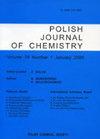THE MULTIPLE-MINIMA PROBLEM IN PROTEIN FOLDING
引用次数: 13
Abstract
The conformational energy surface of a polypeptide or protein has many local minima, and conventional energy minimization procedures reach only a local minimum (near the starting point of the optimization algorithm) instead of the global minimum (the multiple‐minima problem). Several procedures have been developed to surmount this problem, the most promising of which are: (a) build up procedure, (b) optimization of electrostatics, (c) Monte Carlo‐plus‐energy minimization, (d) electrostatically‐driven Monte Carlo, (e) inclusion of distance restraints, (f) adaptive importance‐sampling Monte Carlo, (g) relaxation of dimensionality, (h) pattern‐recognition, and (i) diffusion equation method. These procedures have been applied to a variety of polypeptide structural problems, and the results of such computations are presented. These include the computation of the structures of open‐chain and cyclic peptides, fibrous proteins and globular proteins. Present efforts are being devoted to scaling up these procedures...蛋白质折叠中的多重极小问题
多肽或蛋白质的构象能面有许多局部极小值,传统的能量最小化方法只能达到局部极小值(在优化算法的起点附近),而不能达到全局极小值(多重极小问题)。已经开发了几个程序来克服这个问题,其中最有前途的是:(a)建立程序,(b)静电优化,(c)蒙特卡罗-加-能量最小化,(d)静电驱动蒙特卡罗,(e)包含距离限制,(f)自适应重要性采样蒙特卡罗,(g)维度松弛,(h)模式识别,以及(i)扩散方程方法。这些程序已应用于各种多肽结构问题,并给出了这样的计算结果。这些包括开链和环肽、纤维蛋白和球状蛋白结构的计算。目前正致力于扩大这些程序。
本文章由计算机程序翻译,如有差异,请以英文原文为准。
求助全文
约1分钟内获得全文
求助全文

 求助内容:
求助内容: 应助结果提醒方式:
应助结果提醒方式:


